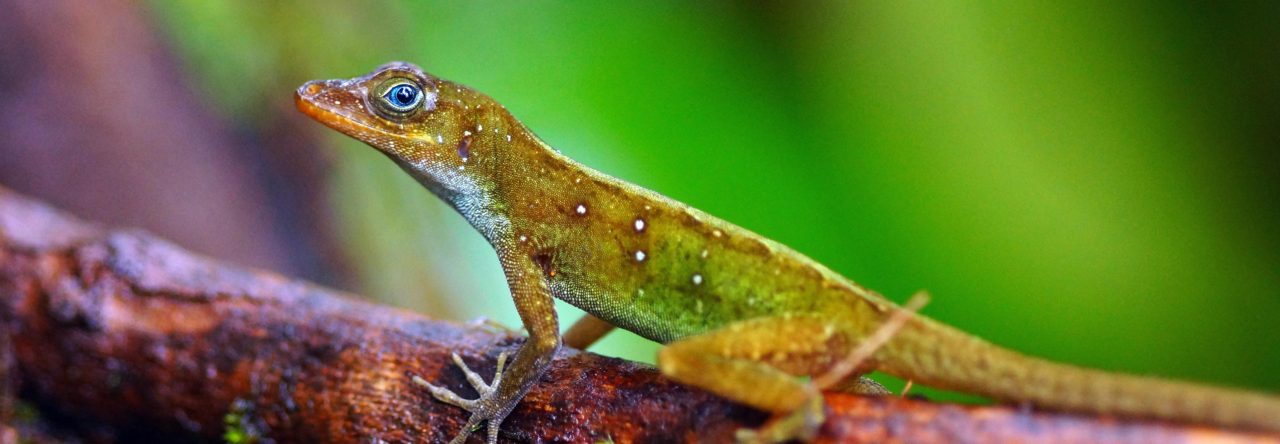Northeast India is a rather unexplored place even though it boasts huge biodiversity, mostly due to the numerous rivers and mountains that dot the landscape and form formidable barriers to dispersal. A majority of the taxa found in this region still await valid descriptions. I have been working on amphibians in the state of Arunachal Pradesh (one of the seven states that form the ‘Northeast’) during my undergraduate years and during my field work, I came across some very striking gular color morphs of the genus Japalura. The genus Japalura consists of 26 species which range from Northeast India in the west to Japan and Taiwan in the east, north to Shaanxi province in northern China and south to northern Vietnam. Of these, four species have been so far reported from Northeast India.
From the photographs taken in the field, Ulrich Manthey identified all of them as belonging Japalura andersoniana. If all of them are the same species, the variation in the gular coloration indeed comes across as striking. There was a note in Sauria (Bhosale et al 2013) that listed various morphs, but no speculations on what could be the possible causes. I have seen these lizards in Eaglenest Wildlife Sanctuary (EWS) and Talley Valley Wildlife Sanctuary (TVWS). The published note has color morphs from another place – Kamlung Wildlife Sanctuary (refer to the map for relative locations of the two places within Arunachal Pradesh)

The locations of Eaglenest Wildlife Sanctuary, Talley Valley Wildlife Sanctuary and Kamlung Wildlife Sanctuary
The observations for each specimen with the corresponding number from #01- #05 is summarised from my field notes. Note: All the animals were encountered opportunistically; there was no dedicated sampling effort toward lizards whatsoever. Elevation recorded from a Casio altimeter watch.

The different color morphs of Japalura species – The field notes are listed corresponding to #01-#05
#01 – EWS, June 2012, Adult, It is the most commonly occurring color morph in EWS. I have also seen juveniles with similar throat colors, Seen in the elevation range 1100m – 1600m asl.
#02 – EWS, May 2012, Adult, encountered at an elevation of around 1800m asl. I haven’t come across a second individual resembling this throat coloration.
#03 – EWS, June 2012, Juvenile, encountered at around 1990m asl; I have never encountered an adult with such coloration.
#04 – Juvenile, throat not very well developed, could possibly be a female, encountered at an elevation around 1350m asl where I have encountered larger individuals with no throat color.
#05 – Juvenile, however, an expedition the previous year by a different group found an adult with similar throat color, the only color morph seen in Talley Valley.
Even if they are the same species, it is quite possible that the different throat color morphs are divergent populations breeding in isolation, especially because apart from #01, the other color morphs have been reported from only particular localities. It is also important to survey more of the Northeast to see if the unexplored areas are home to novel throat color morphs. Speculations with just a few records would be rather vague.
 The annual meeting of the Society for Molecular Biology and Evolution meetings start this weekend in San Juan, PR and there are a number of talks and posters to appeal to the squamatophile.
The annual meeting of the Society for Molecular Biology and Evolution meetings start this weekend in San Juan, PR and there are a number of talks and posters to appeal to the squamatophile.




















